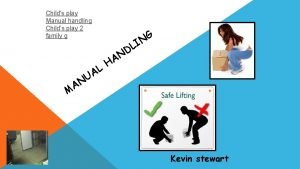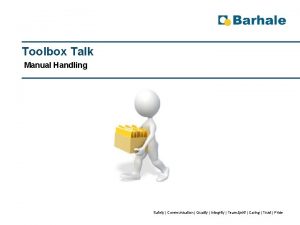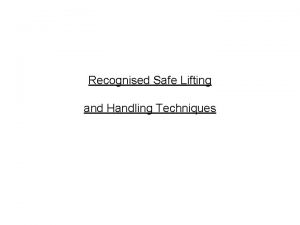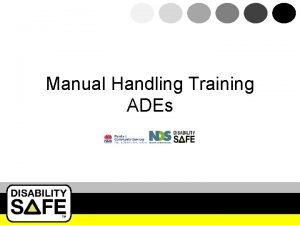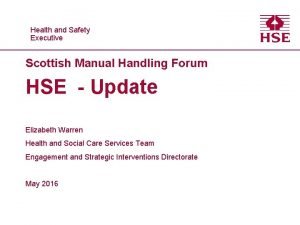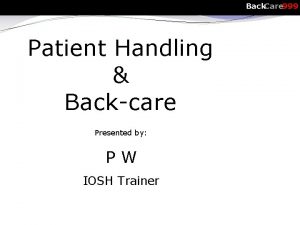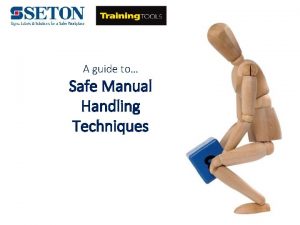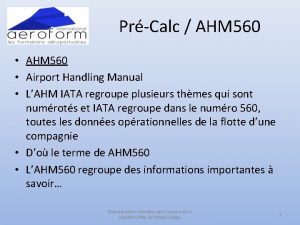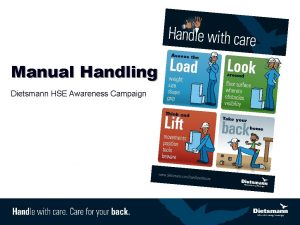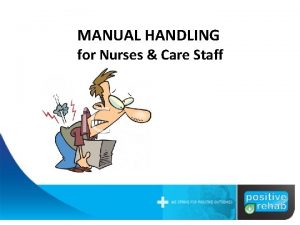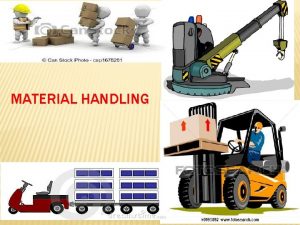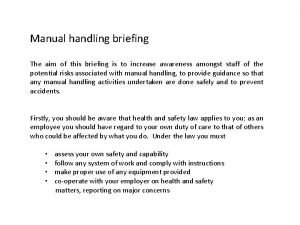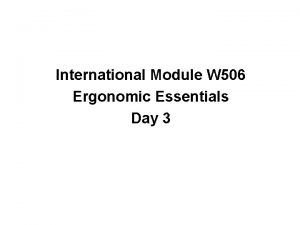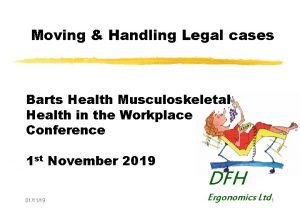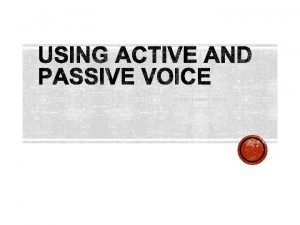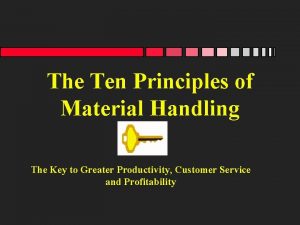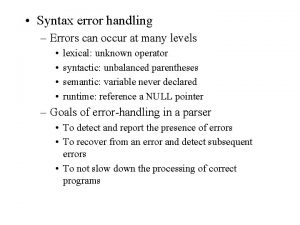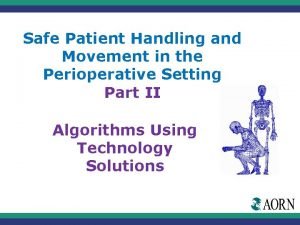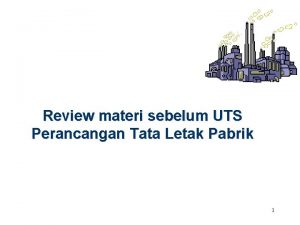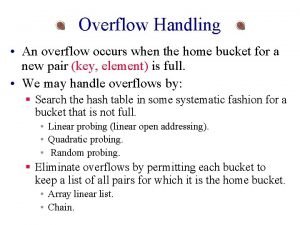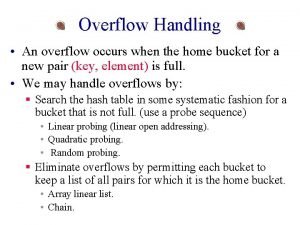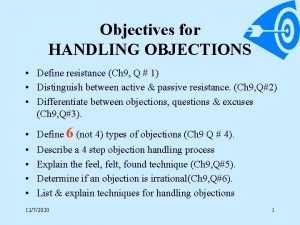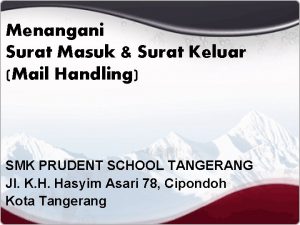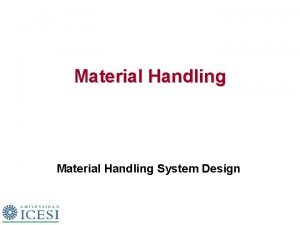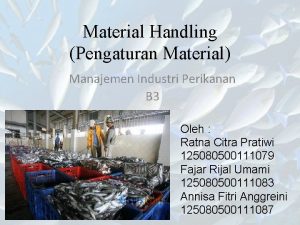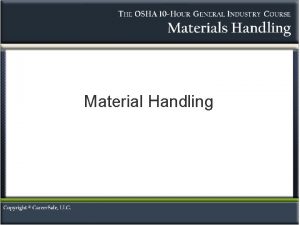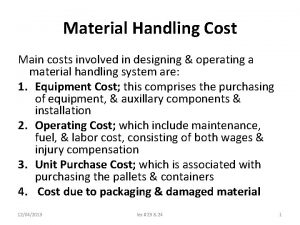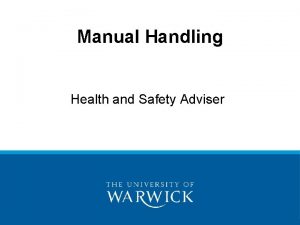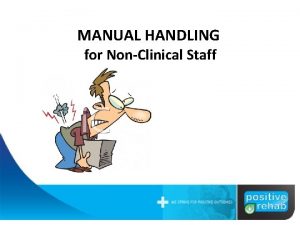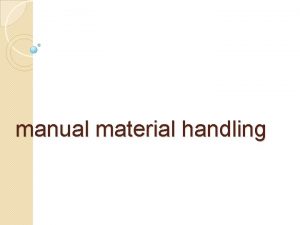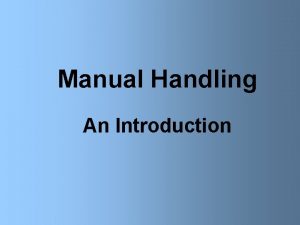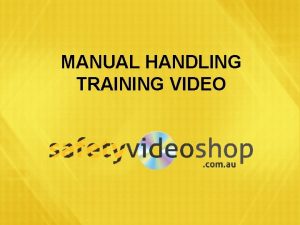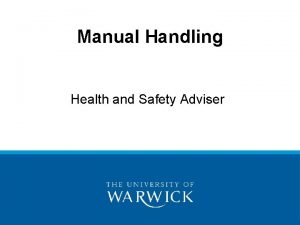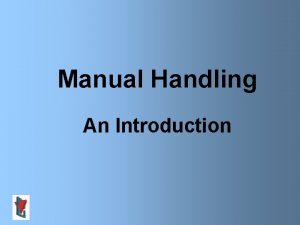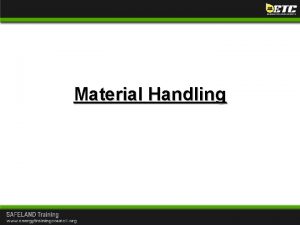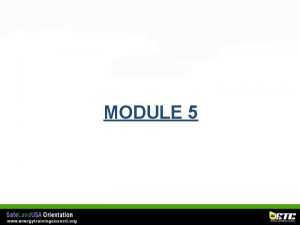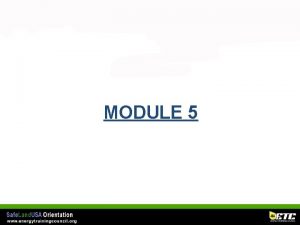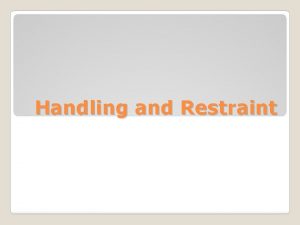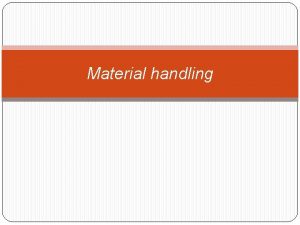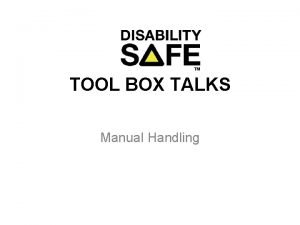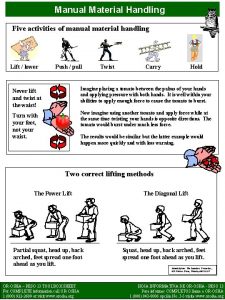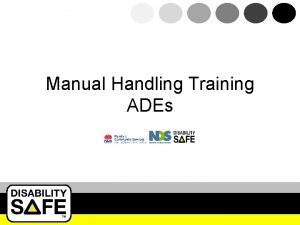Childs play Manual handling Childs play 2 family

























































- Slides: 57

Child's play Manual handling Child’s play 2 family g L A U N G N I L D H N A A M Kevin stewart

AIMS AND OBJECTIVE OF THE LESSON • Aims: Understand the requirements of an engineering organisation in meeting health and safety legislation and regulations • Learning Objectives: State the purpose and content of the Manual Handling Operations Regulations 1992 to include: • Employer and employee duties • How to move loads safely • Use the HSE website to complete manual handling exercise. 30 Bricks!! how many bricks How many bricks 2015

INTRODUCTION TO MANUAL HANDLING MOVING A LOAD This is a mandatory part of unit 001 You will need to: • Observe health and safety procedures at all times. • Plan the lift, how you are going to tackle this assessment on the Learner Report sheet • The learner must include evidence of: • Completed risk assessment. • How you have assessed the load’s weight/size, is it safe to lift, etc. • How many people are to be involved in the lift. • How you have planned the route. • The techniques used/aides required. • Any PPE requirements.

WHAT WE WILL COVER • • • What is manual handling? What’s the problem? Legal framework How to comply? Manual handling technique fork lift fail HSE

WHAT IS MANUAL HANDLING ? • Lifting • Moving • Carrying • Pushing • Pulling lifting correctly

WHAT IS MANUAL HANDLING? Legal definition §Any transporting or supporting of a load (including the lifting, putting down, pushing, pulling, carrying or moving thereof) by hand or by bodily force’ Manual Handling Operations Regulations 1992 (MHOR)

WHAT’S THE PROBLEM? Some statistics §More than a third of plus 3 -day injuries §Injuries build up §Can lead to permanent disability Occur in all workplaces

SOME STATISTICS!

SOME STATISTICS!

SOME STATISTICS!

TYPES OF INJURIES Musculoskeletal • What Are Musculoskeletal Disorders? • (MSDs) consist of minor physical disabilities. • This term is used to describe a variety of conditions that affect the muscles, bones, and joints. • The severity of the MSD can vary. • Pain and discomfort may interfere with everyday activities. • MSDs are extremely common, and your risk increases with age. • Early diagnosis is the key to ease pain while potentially decreasing further bodily damage. Musculoskeletal

TYPES OF INJURIES • Strains and sprains • Fractures • Hernias • Prolapsed (slipped) disc • Cuts §manual handling

HOW WE CAN GET HURT? The Task • Lifting • Moving • Carrying • Pushing • Pulling

ADDITIONAL FACTORS Additional hazards • Bulky • Difficult to grasp • Unstable • Sharp edges • Hot or cold • Wet • Oily §Manual handling

ADDITIONAL FACTORS The workplace • Floor surfaces • Variations in floor levels • Cramped work area • Lighting • Untidy • Hot or cold • Humid

LEGAL BACKGROUND Manual Ha ndling Operations Regulation s 1992

EMPLOYERS’ DUTIES Each employer shall: • So far as is reasonably practicable, avoid the need for employees to undertake manual handling operations, which involve a risk of injury’

EMPLOYERS’ DUTIES CONTINUED Where they cannot be avoided • Make a suitable and sufficient assessment • Take steps to reduce the risk of injury • Provide information on the load • Provide training • Regularly review assessments and controls

EMPLOYEES’ DUTIES Manual handling operations regulations 1992, • Each employee while at work shall make full and proper use of any system of work provided for his use by his employer in compliance with regulation 4(1)(b)(ii) of these regulations

EMPLOYEES’ DUTIES CONTINUED • • • Use the controls provided Co-operate with the employer on health and safety matters Take care not to put themselves or others at risk

HOW TO COMPLY • Establish if a risk of injury exists Risk • How? assessment • Wherever possible (so far as is reasonably practicable), Employers should attempt to avoid the need for manual handling • No hazard - no risk

HOW TO COMPLY Elimination – mechanisation • Hoists • Fork lift trucks • Conveyors • Can think of any more? https: //www. youtube. com/watch? v= 8 Lqrjlq. Kho. Q

HOW TO COMPLY If we cannot eliminate: • We must make a suitable and sufficient assessment of the risk • Deploy ergonomic controls

HOW TO COMPLY • • • Ergonomics- is a science concerned with the ‘fit’ between people and their work. It puts people first, taking account of their capabilities and limitations. Ergonomics aims to make sure that tasks, equipment, information and the environment fit each worker. • Fitting the job to the person, rather than the person to the job

THE ERGONOMIC APPROACH Mechanical assistance • Suction pads • Hoists • Lifting cradle

THE ERGONOMIC APPROACH The task • Improve workplace layout • Reduce the amount of twisting and stooping • Avoid excessive bending and stretching • Reduce carrying distances

THE ERGONOMIC APPROACH The task • Avoid repetitive handling • Job rotation • Team handling • Adequate rest periods

THE ERGONOMIC APPROACH The load • Reduce the weight • Make it easier to hold • Provider appropriate containers • Make it less damaging to hold

THE ERGONOMIC APPROACH The working environment • Remove obstructions • Improve the flooring • Avoid steps and steep ramps

THE ERGONOMIC APPROACH The working environment • Prevent extremes of hot and cold • Provide adequate lighting • House keeping regime

THE ERGONOMIC APPROACH The individual • Take care of those with physical weakness • Look after pregnant workers • Provide information on the load • Provide training in good handling technique

THE ERGONOMIC APPROACH Individual benefits • Makes work easier • Less tiring • Less likely to sustain injury • Improves your productivity

THE ERGONOMIC APPROACH Company benefits • Reduces accidents • Ensures legal compliance • Reduces costs • Improves productivity

LOAD WARNING SIGNS Temp sensitive No hooks Fragile Handle with care Keep dry Protect from heat This way up Do not stack

LOAD WARNING SIGNS Centre of gravity Photographic materials Lift box here Food

how to lift O T W O H T F LI

1. STOP AND THINK

1} Look at the Load Size and Shape Potential instability Possible area to grip If you think you cannot manage the load: GET HELP Look for written indicators, weight, content.

2. PLACE THE FEET

2} Foot Position The optimum position, Feet hip with apart with one foot ahead The lead foot must feel the most comfortable Leading foot along side of load foot facing the direction of travel Your centre of balance as close to the load as comfortably possible

3. GET A FIRM GRIP (ASSESS THE WEIGHT)

3} Bend Knees / Back Straight The relaxation of the knees Adjust your body weight through your feet Front foot flat on the floor Heal of the rear foot raised There may be a tendency to lean excessively forward for extra balance.

4} Test Load/ Take a Firm Grip Test the Load Use a diagonal grip (if possible) Diagonal grip provides support for the load o t r Draw the load towards the body Positioning of Hands Feet at the start of the lift is very important. be R em em t s te e h t l d a o

4. DON’T JERK

5} Lift with Legs/ Load Close As you lift use the Headlock movement Gently raising the head and tucking in the Chin This movement straightens the neck, raises the chest and shoulders Bring the load as close to the body as possible.

6. PUT DOWN, THEN ADJUST

6} Put Down with Care The load should be kept as close to the body as possible Use a staggered foot position for stability If lowering to the floor, (avoid looking down) Avoid twisting the trunk or over stretching.

LIFTING AND LOWERING LIMITS GUIDANCE FOR TASKS PERFORMED LESS THAN 30 PER HOUR

END

SAFE MANUAL HANDLING TECHNIQUES

KINETIC LIFTING

KINETIC LIFTING u u u Kinetic lifting shows you how to lift correctly “ Lifting Techniques” Does not rely on brute force Relies on proper technique, assessment of weight and the function of the handling operation.

WHAT DOES IT INVOLVE? u u u u Posture Grip Back Chin Feet Arms Body

Principles of Weight Ratios Load Close to the Body 20 kg 60 kg Load close to the body will produce a 3 to 1 weight pressure ratio to the lumber area. Fulcrum

Principles of Weight Ratios Load Away from the Body Load away from the body will produce a 10 to 1 weight pressure ratio to the lumber area. 20 kg 200 kg

SAFE MANUAL HANDLING TECHNIQUES Safe Manual Handling Techniques is characterised as: A 6 point lift which consists of a set of Base Movements They are: -

SAFE MANUAL HANDLING TECHNIQUES 1} Look at the Load 2} Foot position 3} Bend Knees / Back Straight 4} Test Load / Take a Firm Grip 5} Lift with Legs / Load Close 6} Put Down with Care.
 Manual handling childs play
Manual handling childs play Childs work childs play
Childs work childs play Manual handling tool box talk
Manual handling tool box talk What do the principles of manual handling help you to do
What do the principles of manual handling help you to do Kinetic lifting
Kinetic lifting Manual handling
Manual handling Mhra
Mhra Mnemonic fluency manual handling
Mnemonic fluency manual handling Manual handling
Manual handling Ahm 560 manual
Ahm 560 manual Manual handling campaign
Manual handling campaign Lunge position manual handling
Lunge position manual handling Moving and handling competency assessment template
Moving and handling competency assessment template Definition of material handling
Definition of material handling Aim of manual handling
Aim of manual handling W 506
W 506 Litee manual handling
Litee manual handling Manual handling pictures
Manual handling pictures Love and logic
Love and logic Perceptual reasoning
Perceptual reasoning Catcher in the rye chapter 15
Catcher in the rye chapter 15 Mdcalc childs pugh
Mdcalc childs pugh Chester anuszak
Chester anuszak Kenna childs wikipedia
Kenna childs wikipedia Dee childs
Dee childs A child's sleep poem
A child's sleep poem Abcd of nutritional assessment
Abcd of nutritional assessment Gretchen childs
Gretchen childs Gretchen childs
Gretchen childs Deb childs
Deb childs Janet childs center for living with dying
Janet childs center for living with dying Family facilitator manual utah
Family facilitator manual utah I've got a friend we like to play we play together
I've got a friend we like to play we play together Play random play basketball
Play random play basketball Typewriter types
Typewriter types Play within the play hamlet
Play within the play hamlet 20 questions game
20 questions game Conclusion on topic family
Conclusion on topic family Varies from family to family on the periodic table
Varies from family to family on the periodic table Characteristics of single parent family
Characteristics of single parent family Objection handling meaning
Objection handling meaning Web handling basics
Web handling basics 10 principles of material handling
10 principles of material handling Ppe matrix for chemical handling
Ppe matrix for chemical handling Syntax error handling
Syntax error handling Safe patient handling algorithms
Safe patient handling algorithms Pertanyaan tentang tata letak fasilitas pabrik
Pertanyaan tentang tata letak fasilitas pabrik Principles of grievance handling
Principles of grievance handling Overflow handling
Overflow handling Overflow handling
Overflow handling Handling objectives
Handling objectives Dilembar kartu kendali pada kolom pengolah diisi
Dilembar kartu kendali pada kolom pengolah diisi Potential hazards
Potential hazards Material handling planning chart
Material handling planning chart Manajemen industri perikanan
Manajemen industri perikanan Precautions when moving materials manually
Precautions when moving materials manually Material handling costs
Material handling costs Romeo och julia analys
Romeo och julia analys
